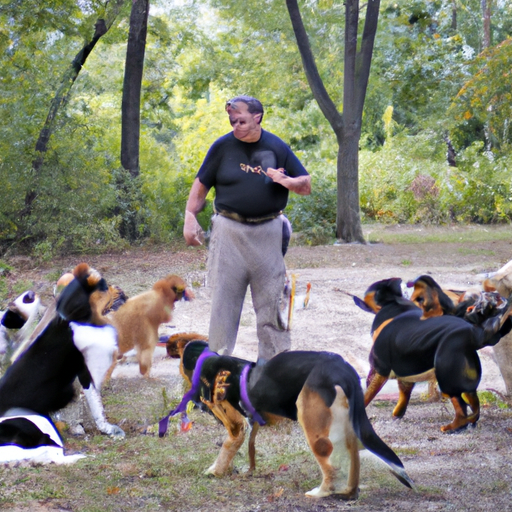“`markdown
How to Train Dogs
H2: Understanding Your Dog’s Behavior
As a caregiver, it’s crucial for you to understand that your furry friend is not just a pet, but a member of your family with its own set of behaviors, emotions, and needs.
Dogs communicate in a language of their own, often through body language. Therefore, it’s essential for you to understand these subtle signals. For example, a wagging tail doesn’t always signify happiness; sometimes it can denote fear or anxiety.
Additionally, each breed has its own unique behavioral traits. Collating these observations will help you decipher your dog’s behavior more effectively.
H2: Setting a Routine
Establishing a routine is an integral part of dog training. Dogs are creatures of habit and thrive on predictability.
- Feeding times: Regular feeding times aid digestion and make house training easier.
- Exercise: Regular walks, playtime, or runs can help channel their energy constructively.
- Sleep and downtime: Just like humans, dogs too need their downtime to recharge.
Remember, the key to a successful routine is consistency.
H2: Implementing Basic Commands
Training your dog to understand basic commands is an essential part of their training.
- Sit: The most basic command, it’s a foundation for other commands.
- Stay: This command can help you manage your dog in various situations.
- Come: This can be a lifesaver, calling your dog back to you in potentially dangerous situations.
- Leave it: Useful in preventing your dog from picking up something it shouldn’t.
H2: Positive Reinforcement
| Reward | Purpose |
|---|---|
| Treats | A tasty reward for good behavior |
| Toys | A fun way to reward a job well done |
| Praise | Verbal affirmation of good behavior |
Positive reinforcement is a powerful tool in dog training. Reward your dog for good behavior, and they’ll be more likely to repeat it. This table provides a few examples of positive reinforcement you can use.
H2: Dealing with Problematic Behavior
Even the most well-behaved dog can have moments of disobedience or unruly behavior. It’s crucial not to lose your patience – remember, they’re not being ‘bad’, they’re just being dogs.
Try to understand what’s causing the behavior. Is it a lack of exercise? Anxiety? Boredom? Address the underlying issue, rather than just the symptoms.
Frequently Asked Questions
Q1: How long should a training session last?
A: Keep training sessions short, ideally 15 minutes, so your dog doesn’t lose focus.
Q2: When should I start training my puppy?
A: You can start simple training with puppies as young as eight weeks old.
Q3: How can I stop my dog from barking at everything?
A: Try to understand what triggers your dog’s barking, and address those triggers where possible. Consistent training and positive reinforcement can also help.
Q4: My dog isn’t responding to training, what can I do?
A: Patience is key. If you’re struggling, consider seeking help from a professional dog trainer.
“`



